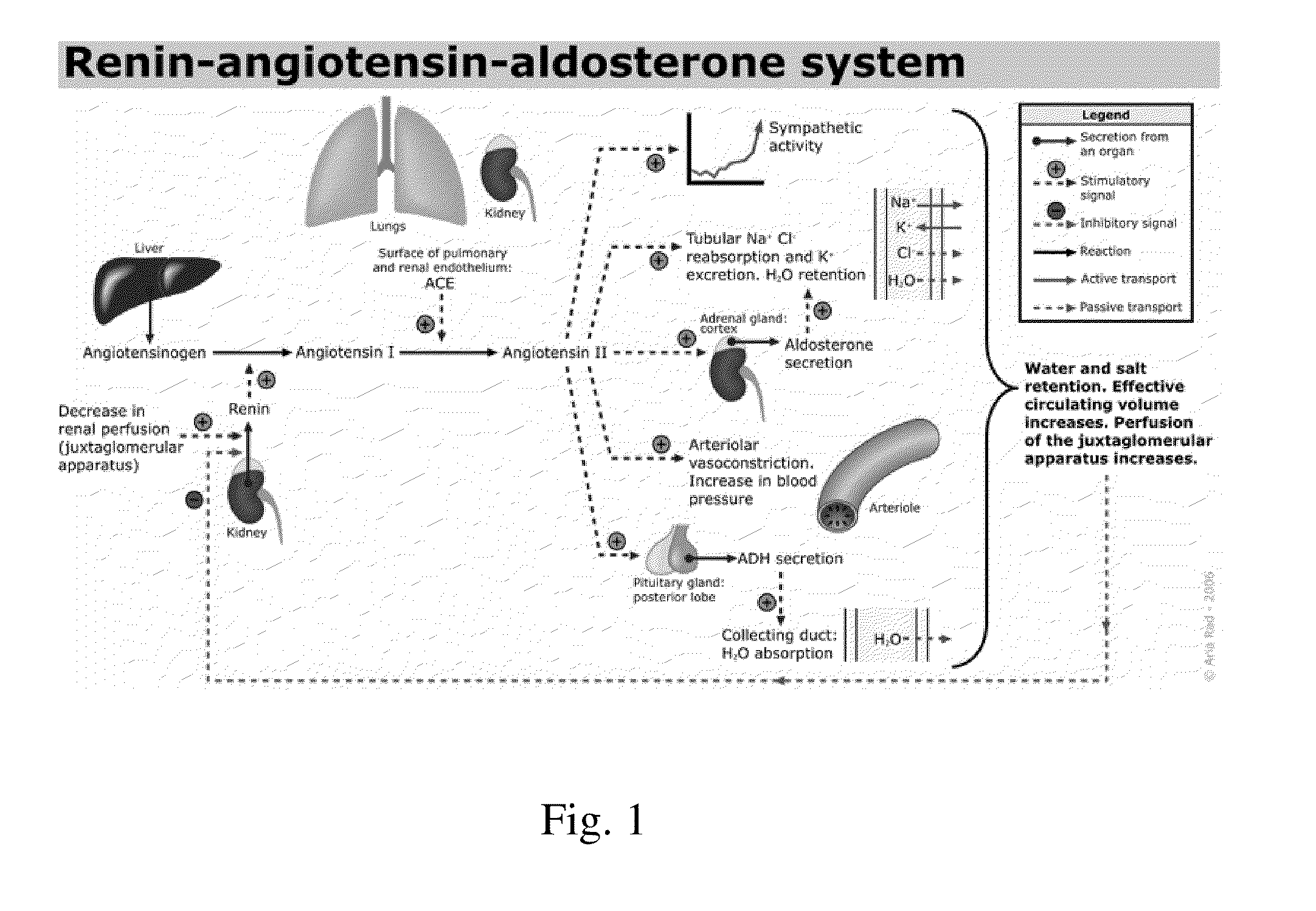Method of Treating Low Blood Pressure
a low blood pressure and low-pressure technology, applied in the field of therapeutic regimens, can solve the problems of limiting the utility of these agents in the sickest patients, the rate of cardiac surgery is steadily declining, and the incidence of sepsis continues to climb
- Summary
- Abstract
- Description
- Claims
- Application Information
AI Technical Summary
Benefits of technology
Problems solved by technology
Method used
Image
Examples
example i
[0017]A dose study was designed to determine the feasibility of Ang II as a treatment for sepsis related hypotension.
[0018]A 20 patient randomized blinded study in the treatment of sepsis related hypotension was proposed. Patients suffering from septic shock receiving >15 mcg / min of norepineprhine are eligible. Patients are randomized to Ang II or norepinephrine in a blinded fashion. There are 10 patients in each arm. Norepinephrine is used as a control instead of a true placebo, because the blood pressure rising effects of Ang II would defeat the blinding intent.
[0019]All patients have the treatment of vasopressors titrated to a mean arterial pressure (MAP) of 65 mm of Hg. Patients are then randomized to a control group or arm, or an interventional group or arm treated with Ang II. Patients randomly assigned to the control group are administered with norepinephrine starting at 5 mcg / min, and can be titrated up to 7.5 mcg / mink, and then to 10 mcg / min. Patients in the interventional ...
PUM
| Property | Measurement | Unit |
|---|---|---|
| blood pressure | aaaaa | aaaaa |
| mean arterial pressure | aaaaa | aaaaa |
| half life | aaaaa | aaaaa |
Abstract
Description
Claims
Application Information
 Login to View More
Login to View More - R&D
- Intellectual Property
- Life Sciences
- Materials
- Tech Scout
- Unparalleled Data Quality
- Higher Quality Content
- 60% Fewer Hallucinations
Browse by: Latest US Patents, China's latest patents, Technical Efficacy Thesaurus, Application Domain, Technology Topic, Popular Technical Reports.
© 2025 PatSnap. All rights reserved.Legal|Privacy policy|Modern Slavery Act Transparency Statement|Sitemap|About US| Contact US: help@patsnap.com


